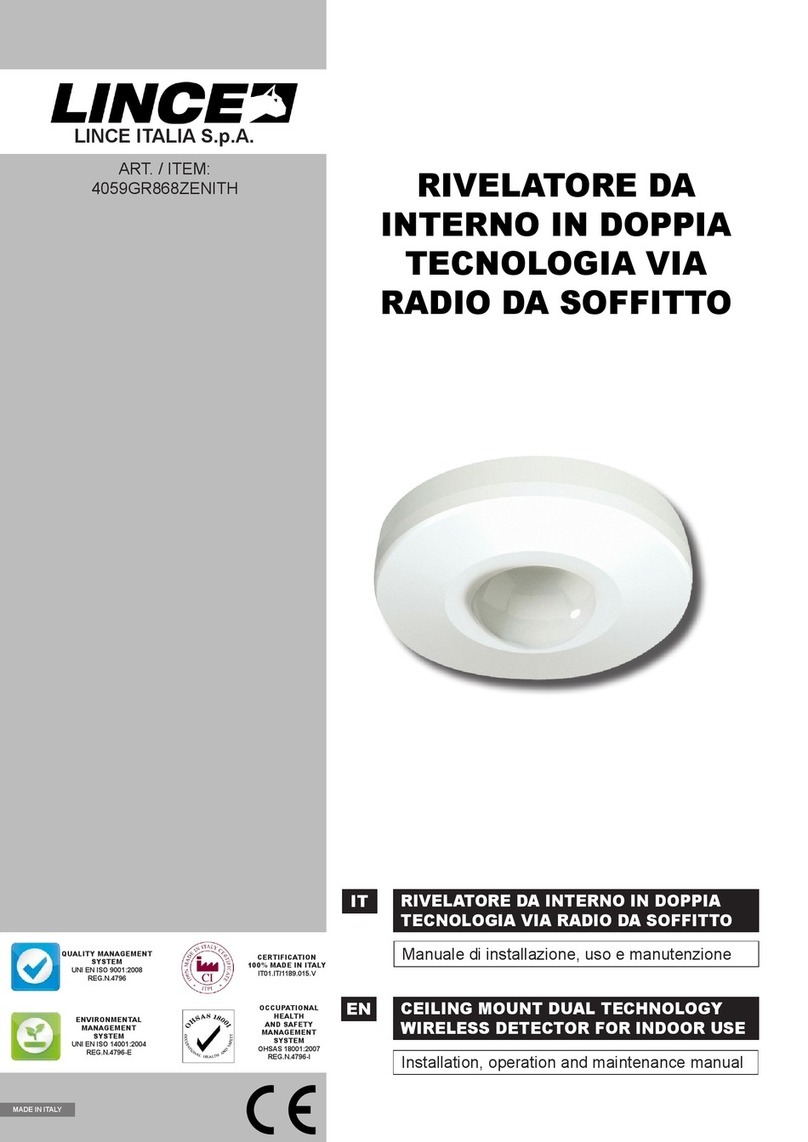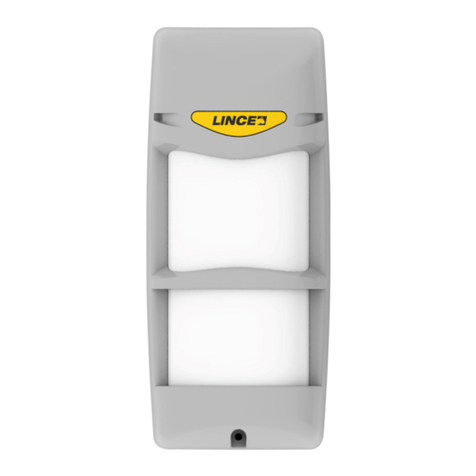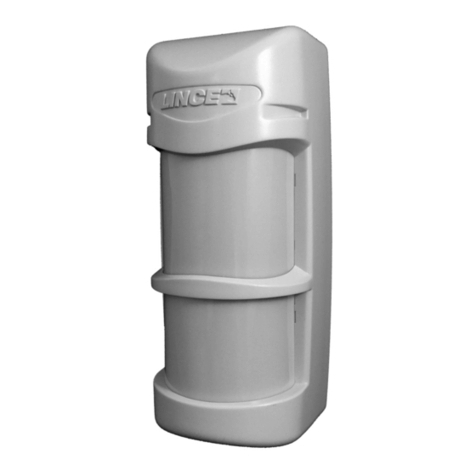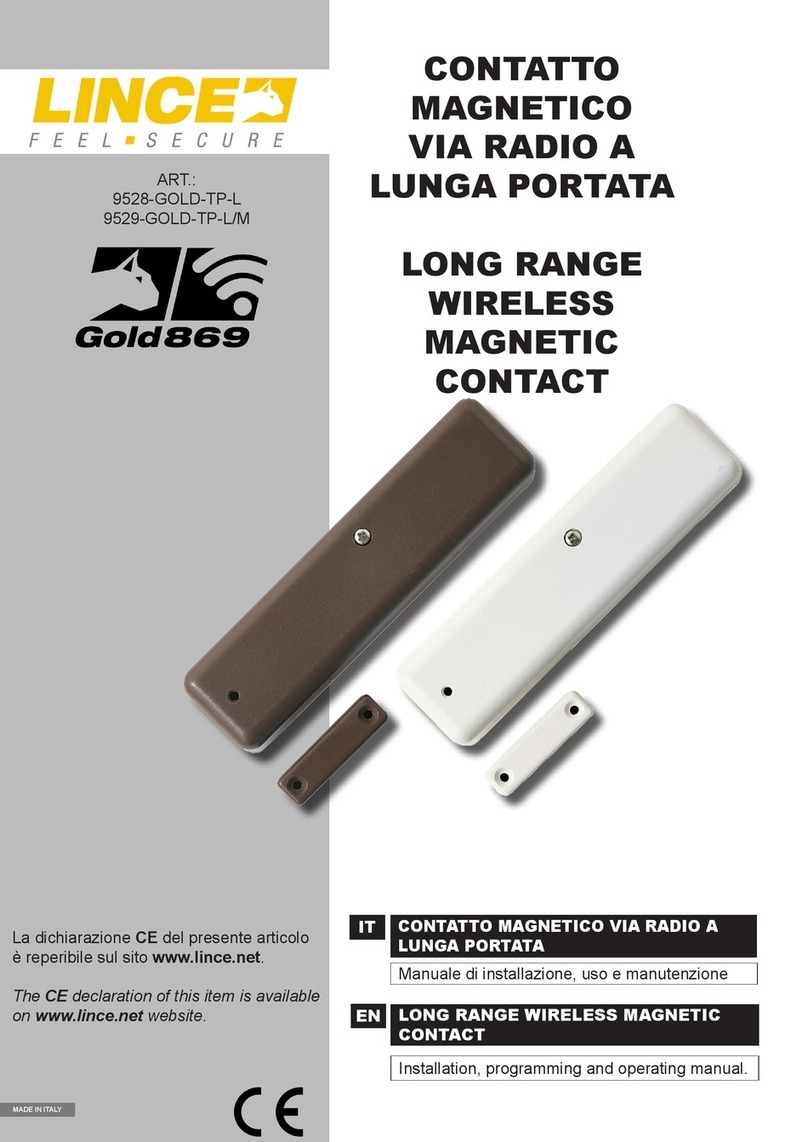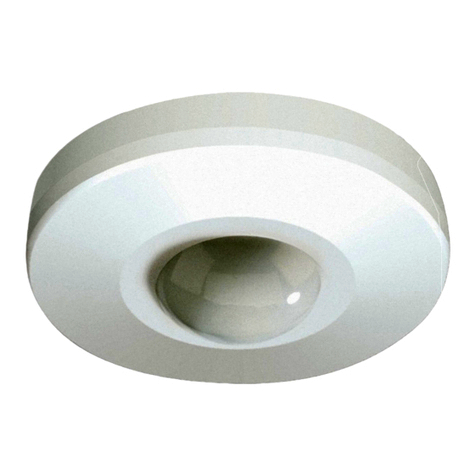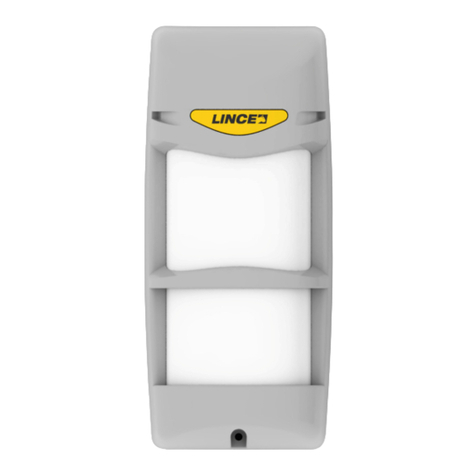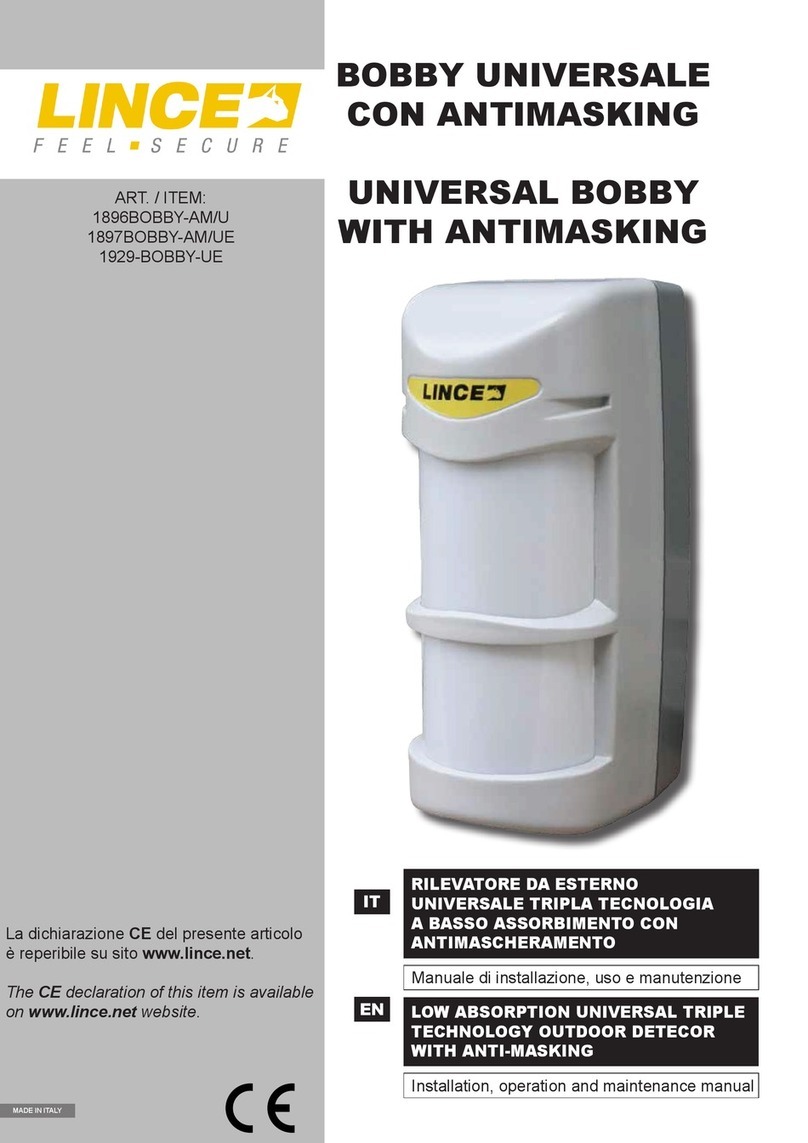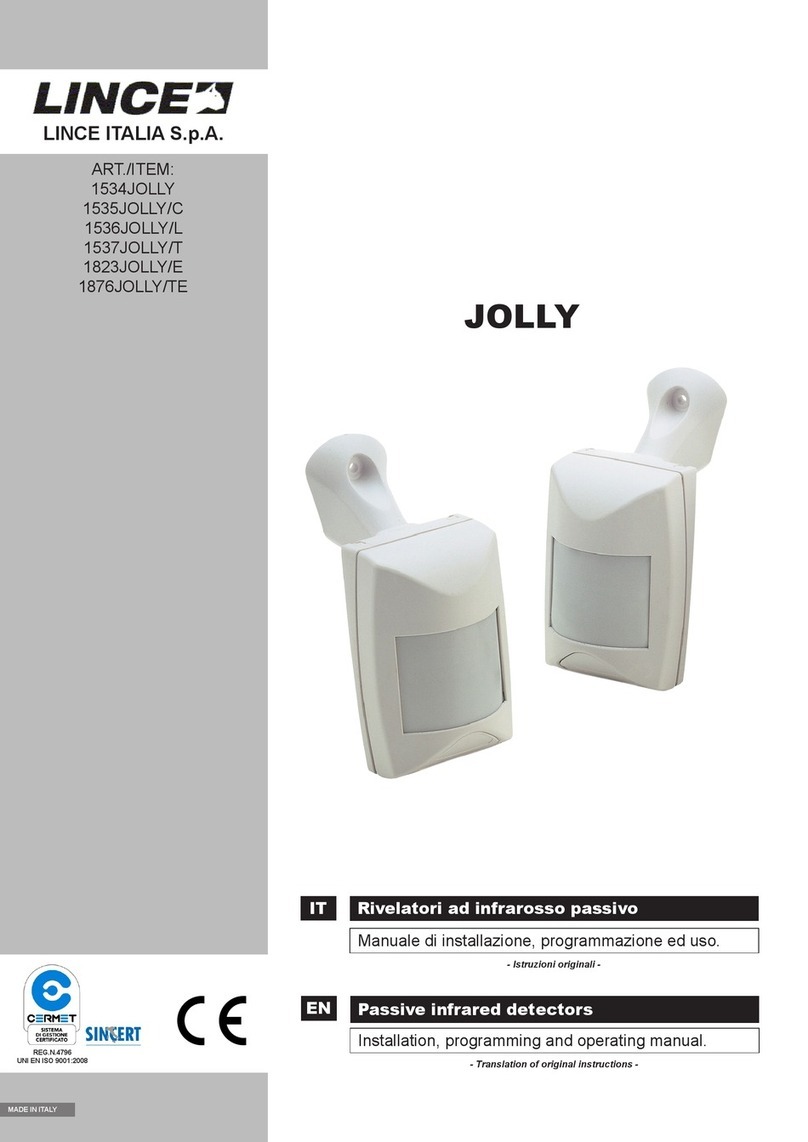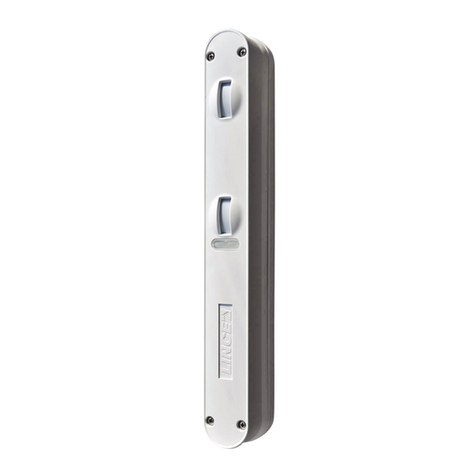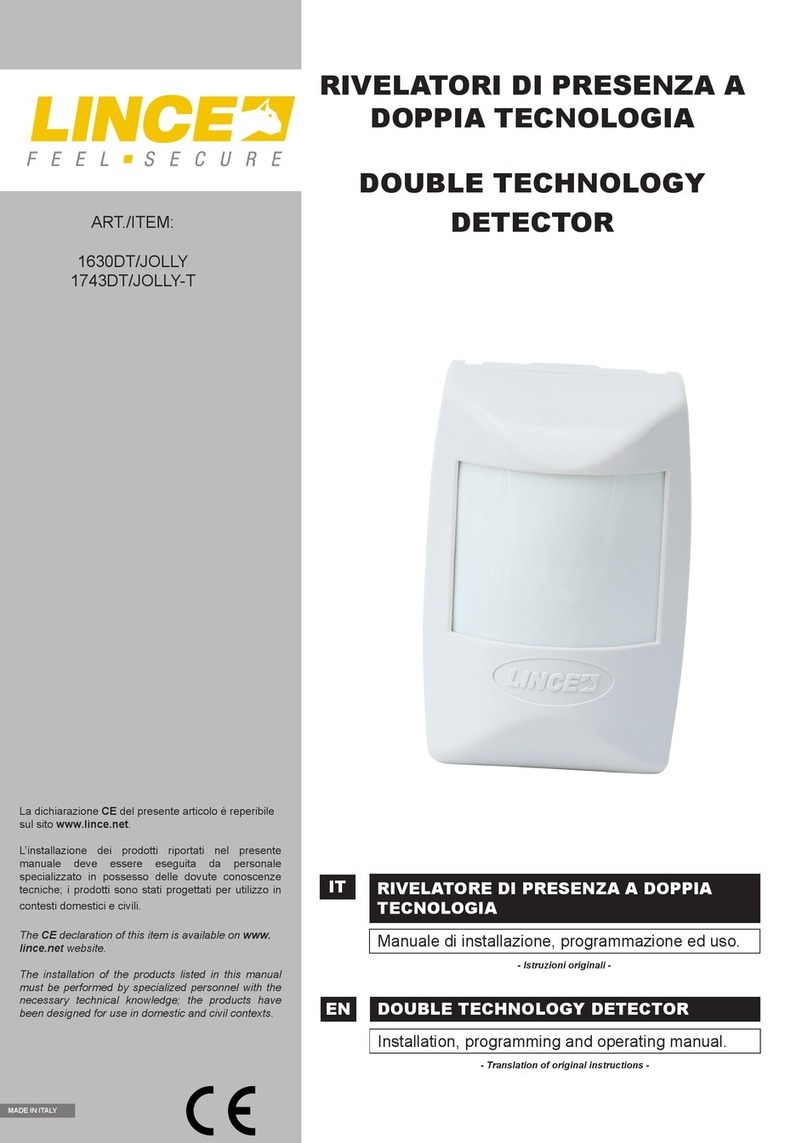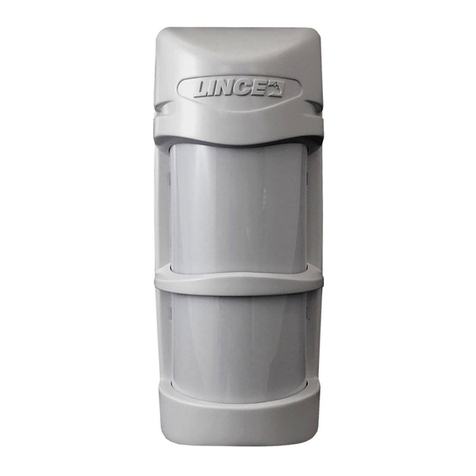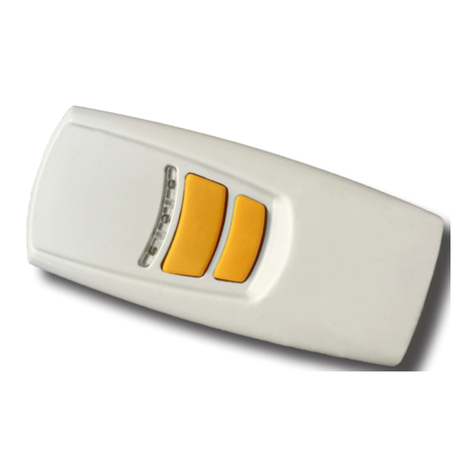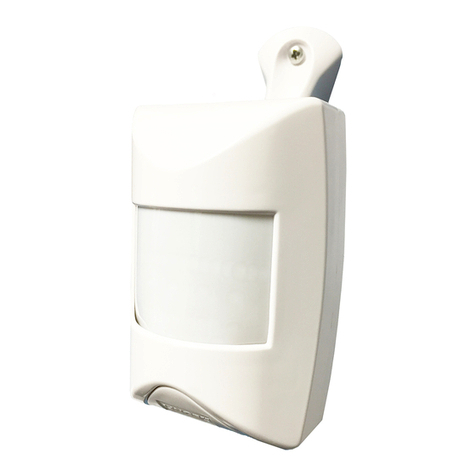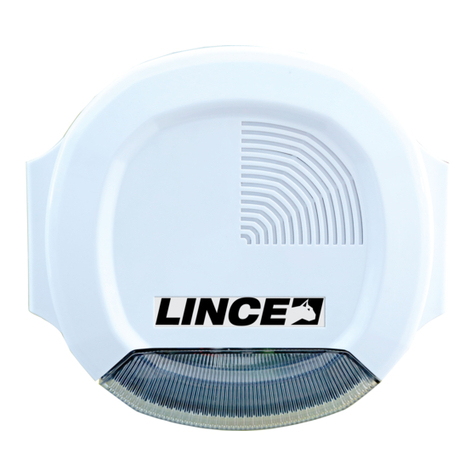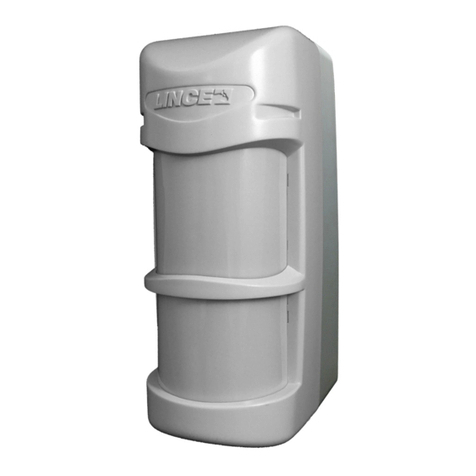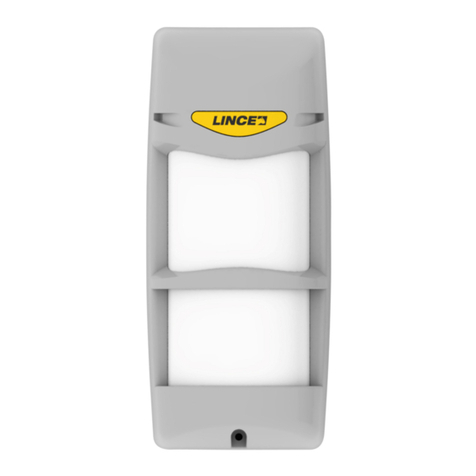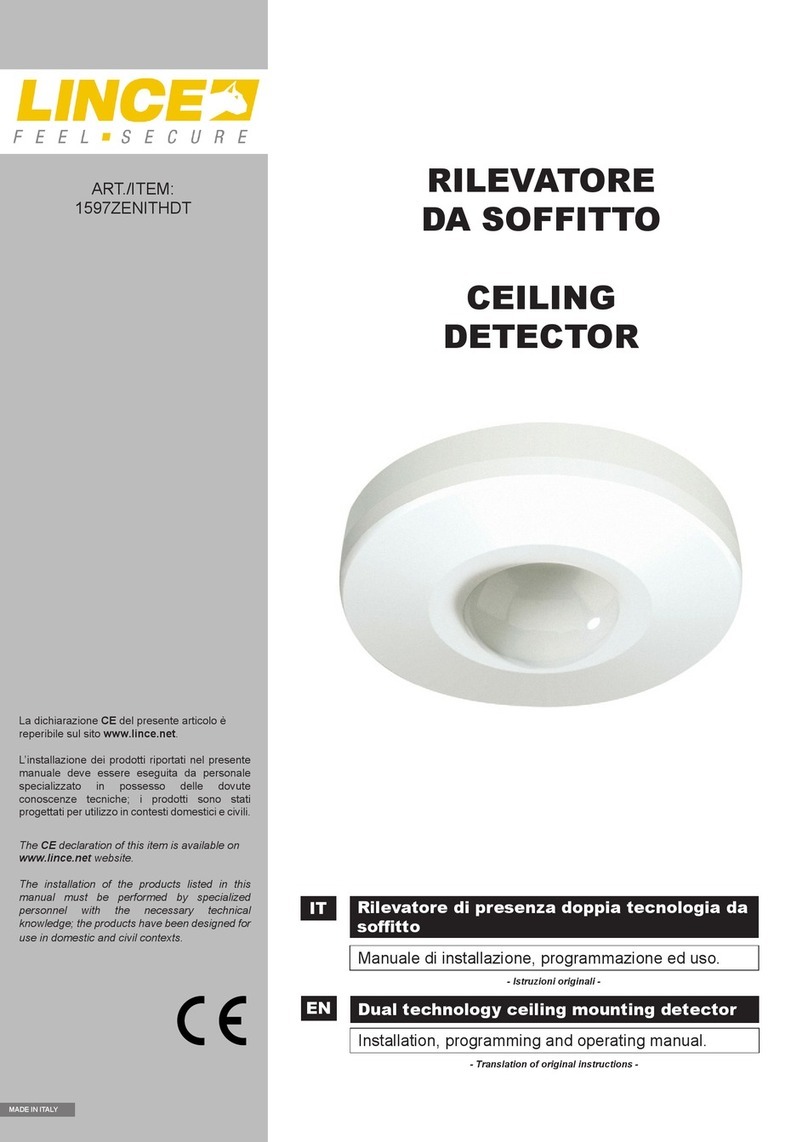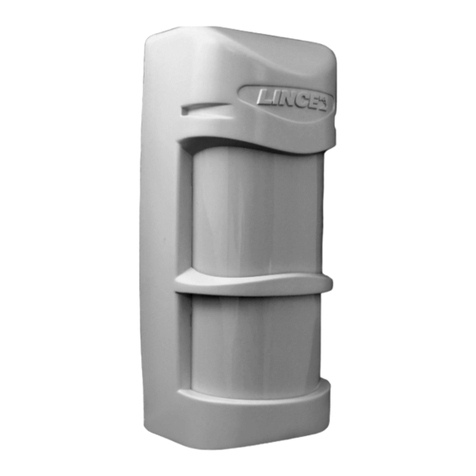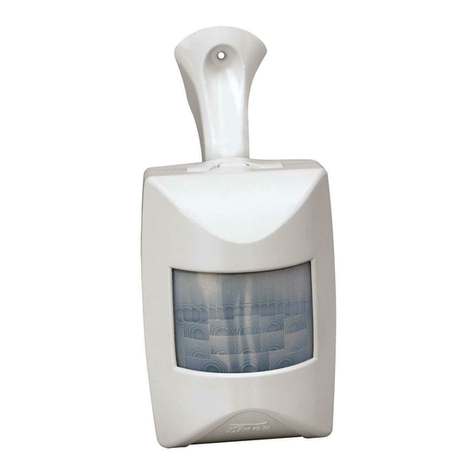O BOBBY
-
-
0,525GHz.
-
. 3 -
-
3m 15m.
BOBBY
.
-
.
-
( 5~10
cm .
:
DIP switch
ON.
LED 30
30
LED
, LED
30 -
-
-
-
LEDs
-.
15
FAULT.
The BOBBY outdoor detector consists of two
dual PIR passive sensors and a 10,525GHz
microwave. The particularly evolved electronics
has been designed to guarantee the maximum
performances in external and rigid temperatures
environment. The three beams are adjustable
and allow getting a horizontal coverage
The lower infrared beam is even vertically
adjustable and it allows getting a detection
range between 3m and 15m.
Besides the alarm functions, the detector is
provided with ANTIMASKING functions
ANTIMASKING function has been implemented
to make the Bobby detector mostly unassailable
from those, who could have access to the site
where the sensor is installed, during the period
in which the system of alarm results disabled,
therefore in order to signalling attempts
The detector is able to notice attempts of
microwave obscuring with metallic or great
dimensions not metallic objects.
to the detector).
Antimasking activation:
.
When this function is activated the blue LED get
blinking for 30 sec. Close the cover during the
blinking.
Then yellow and blue LED will blink
simultaneously for 30 s indicating that the
sensor is sampling the microwave reflection.
It is important that during the initialization no
obstacles or persons are closer than 1 meter to
the sensor. The cover must be in closed
position.
will return
to their normal function.
If the detector is blinded by a metallic object for
more than 15 s it indicates the masking and the
FAULT relay get opened.
At the first event of alarm the relay goes back to
